Up-to-date acoustic materials can not only improve your interior’s acoustic soundproofing qualities but also enhance its visual design. We have chosen some great sustainable and appealing solutions that prove — design never sounded better!
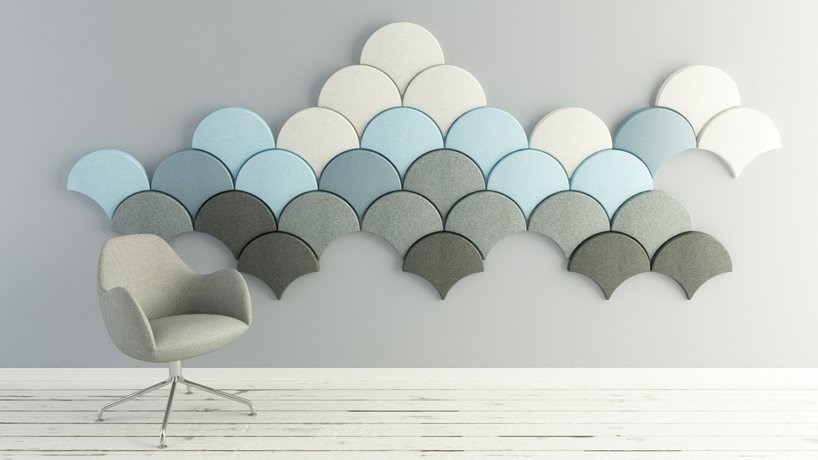
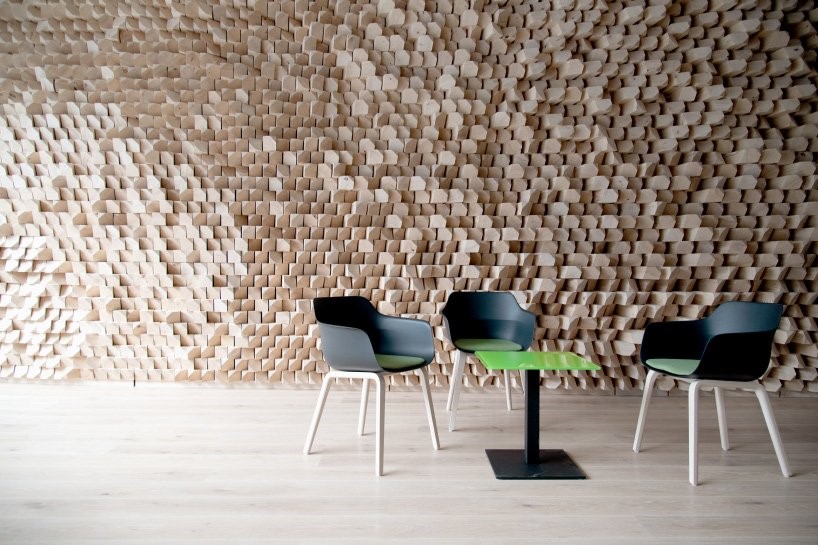
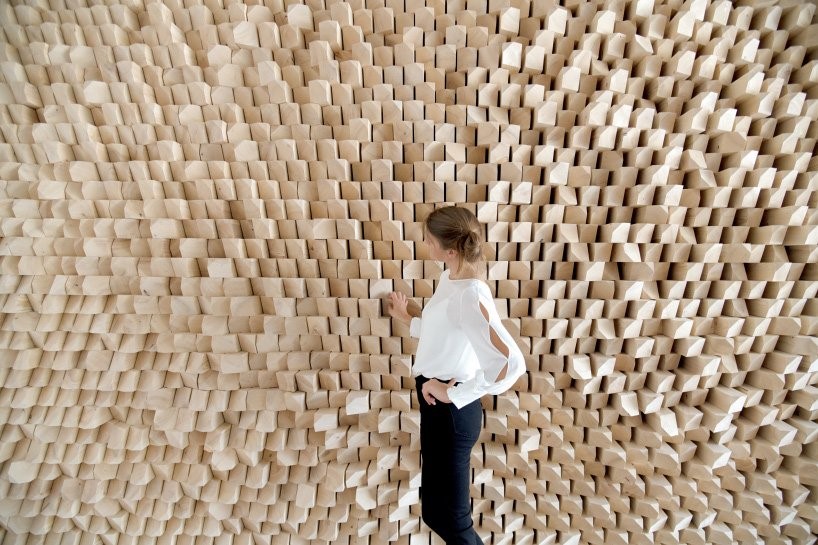
Acoustic wall by Gramazio Kohler Research
Gramazio Kohler Research, an architectural robotic laboratory at ETH Zurich, has found an unconventional and architecturally beautiful way to improve the acoustic qualities of a cafeteria of the engineering firm Basler&Hofmann in Esslingen, Switzerland. Three computationally designed and built walls are composed of 8,500 identical fir timber blocks, which are positioned according to the principals of the ‘Schroeder diffusor’— a structure comprising a number of wells of different, carefully chosen depths.
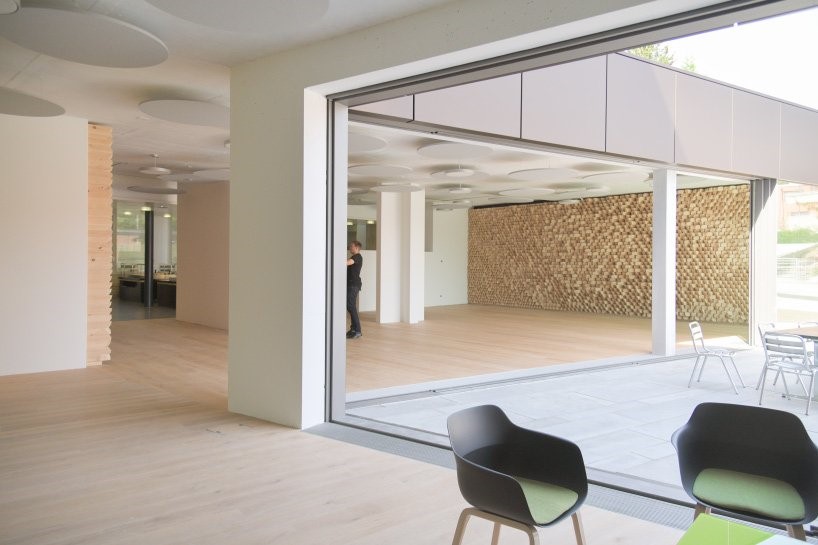
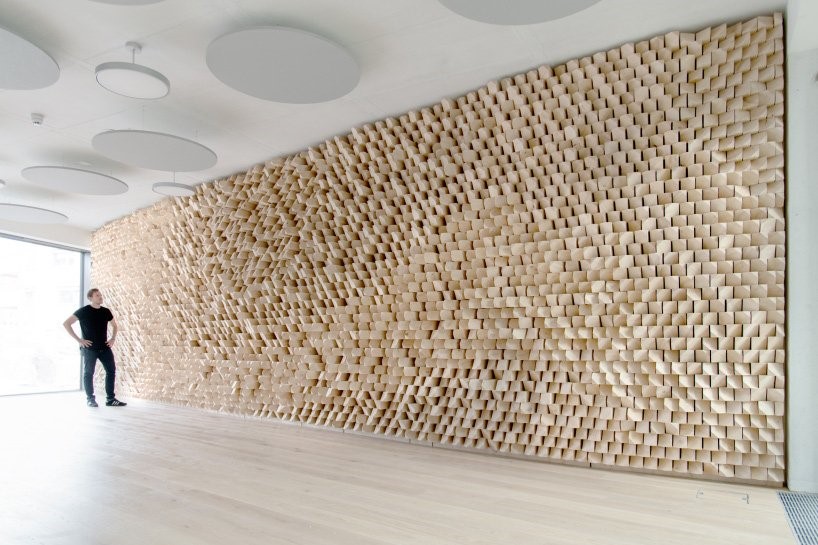
Acoustic wall by Gramazio Kohler Research
The varying gaps between the blocks improve the cafe’s acoustic absorption and enhance speech eligibility. On top of that, the asymmetric cut of the front side of the blocks and their different orientations create ever-changing shadow patterns on the wall. The gaps also function as air ducts for the ventilation system integrated behind the walls.
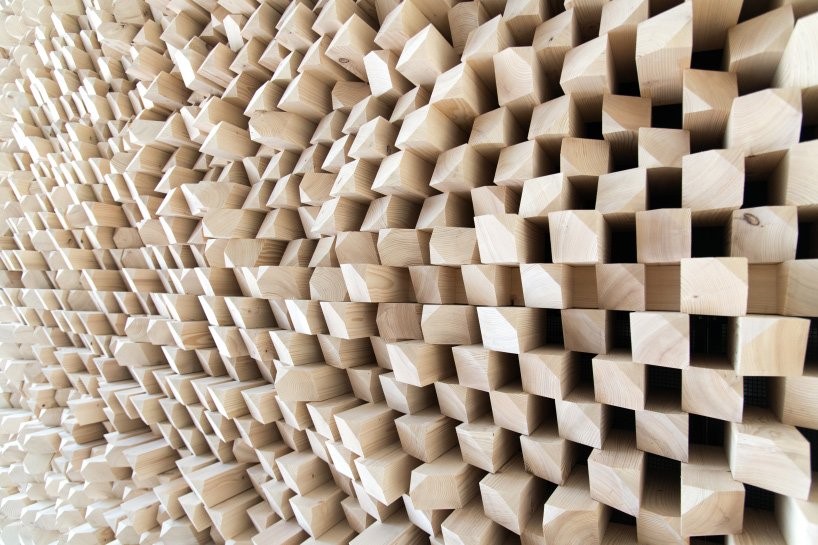
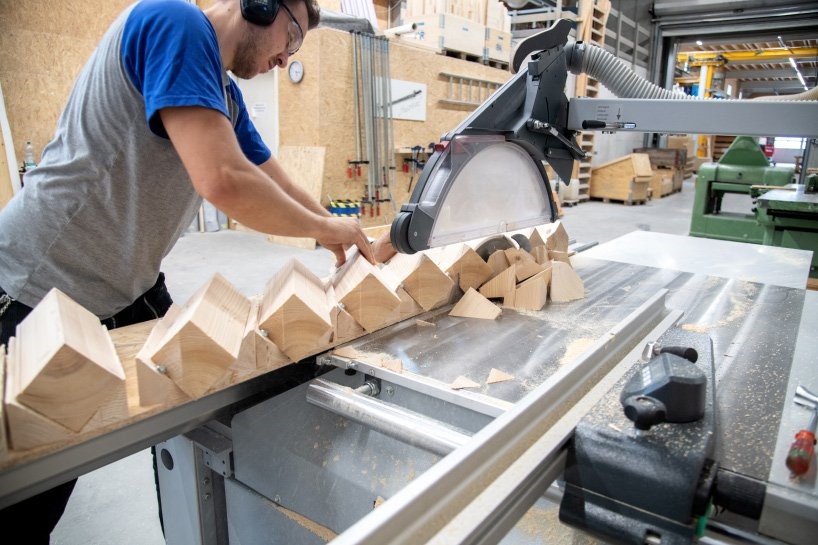
Acoustic wall by Gramazio Kohler Research
To build and assemble the wall, the carpenters used an augmented object laying technology, which provided visual guidance for placing blocks in accordance to the specified design. The system recognized and tracked objects, while a custom-built camera controller unit provided feedback on deviations between the built structure and the virtual design.
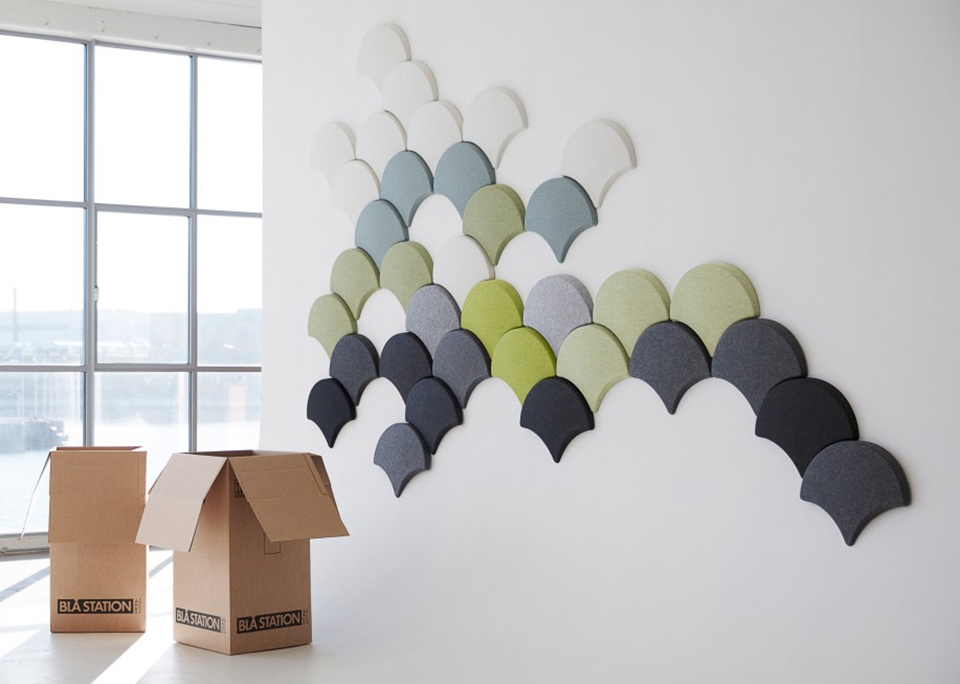
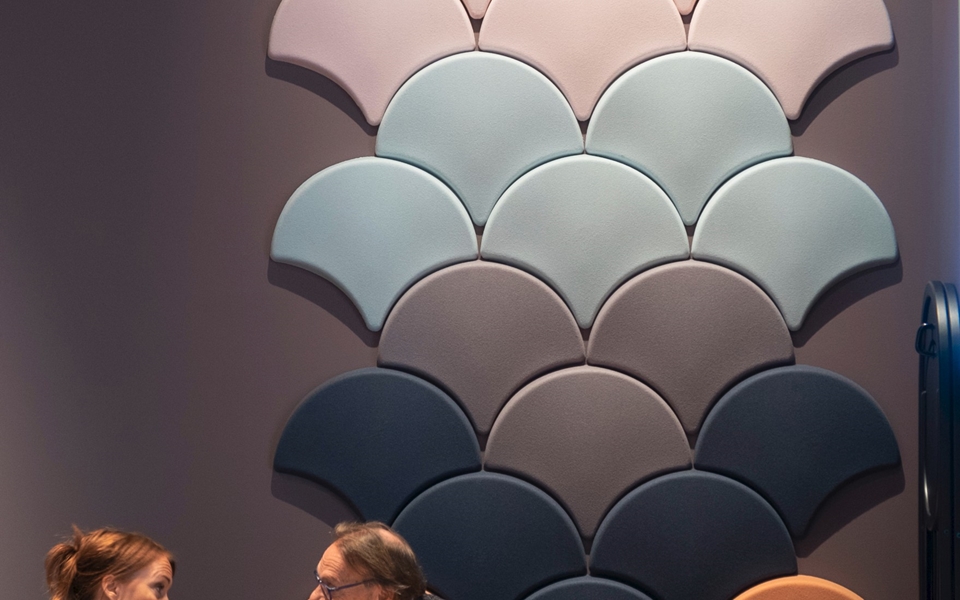
Ginkgo acoustic panels by Stone Designs for Blå Station (also the header image)
Estonian practice Stone Designs has designed the ‘Ginkgo acoustic panel’ for Blå Station, a furniture producer from Sweden. The repeatable elements, evocative of a natural landscape, are crafted from 100% hot-molded polyester form felt and attached with the use of magnets.
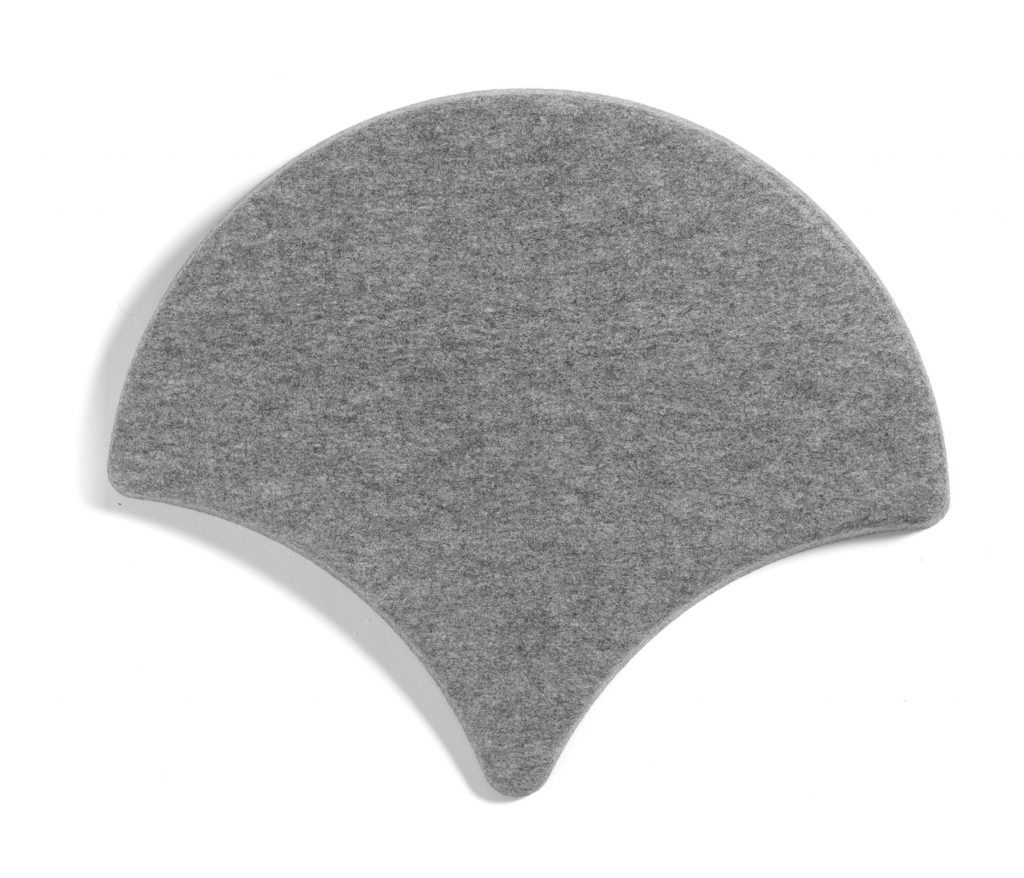
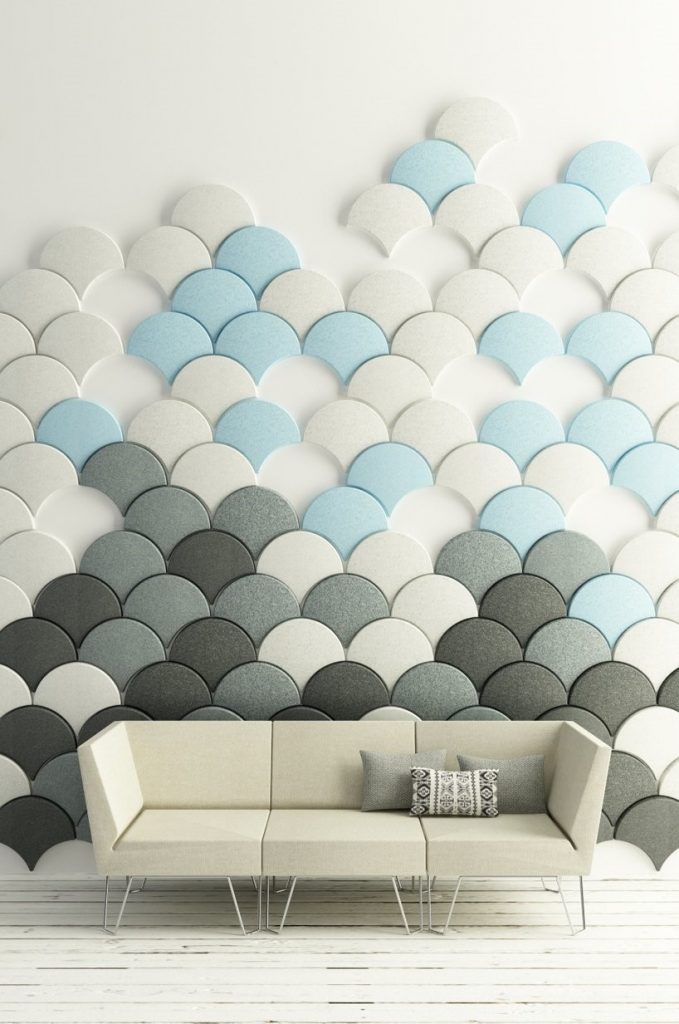
Ginkgo acoustic panels by Stone Designs for Blå Station
Named after the traditional Japanese ginkgo tree, which are considered a bearer of hope and a symbol of resilience and peace, the pieces have the distinctive fan-shaped form of its leaves.
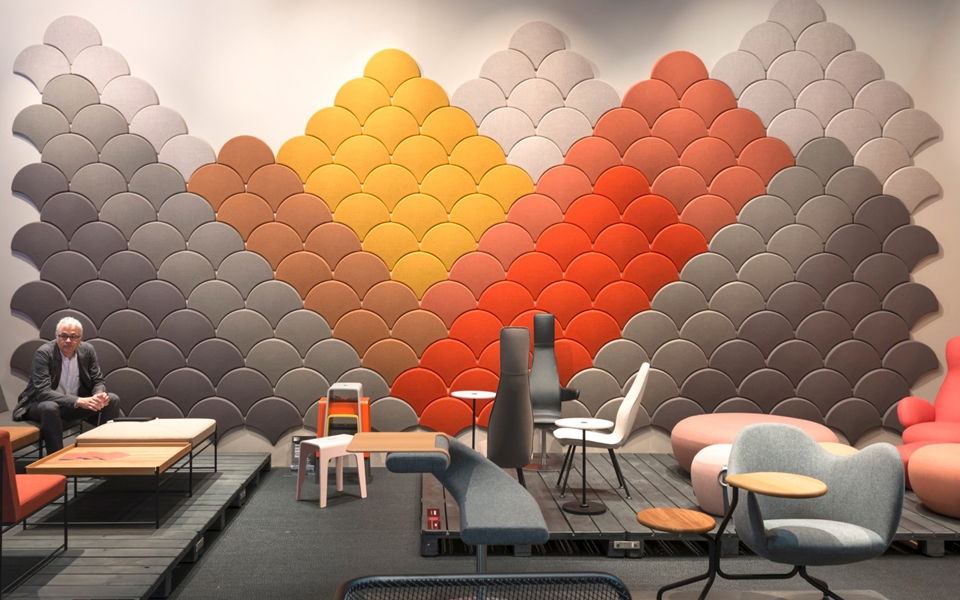
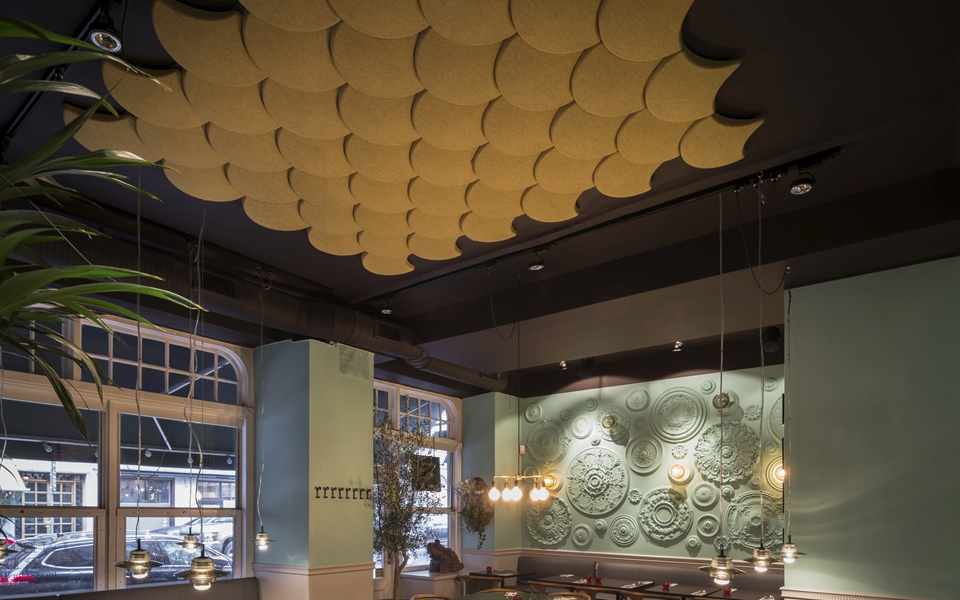
Ginkgo acoustic panels by Stone Designs for Blå Station
The panels can be constructed into a modular shape that slopes downwards, which helps to improve their acoustic properties, but also give a sense of movement to the wall with shadows accentuating their organic image.

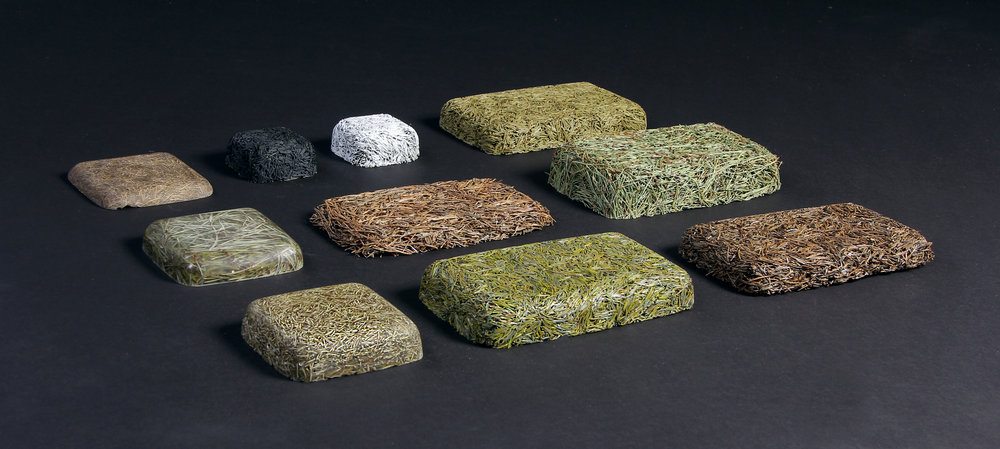
EOacoustic panels by Aotta
Russian design studio Aotta develops sound-absorbing fiber materials made of natural biodegradable and cheap materials, which are usually disposed of like a useless waste. First, they crafted their acoustic panels made of hemp husks, and later founded EOacoustic project which focuses on new sustainable composite material made of conifer-needle and biodegradable binder. The resulting porous panels absorb sounds, regulate humidity and temperature, and, with its natural colour and texture, they create a comfortable and healthy atmosphere, reminiscent of that in a pine forest.
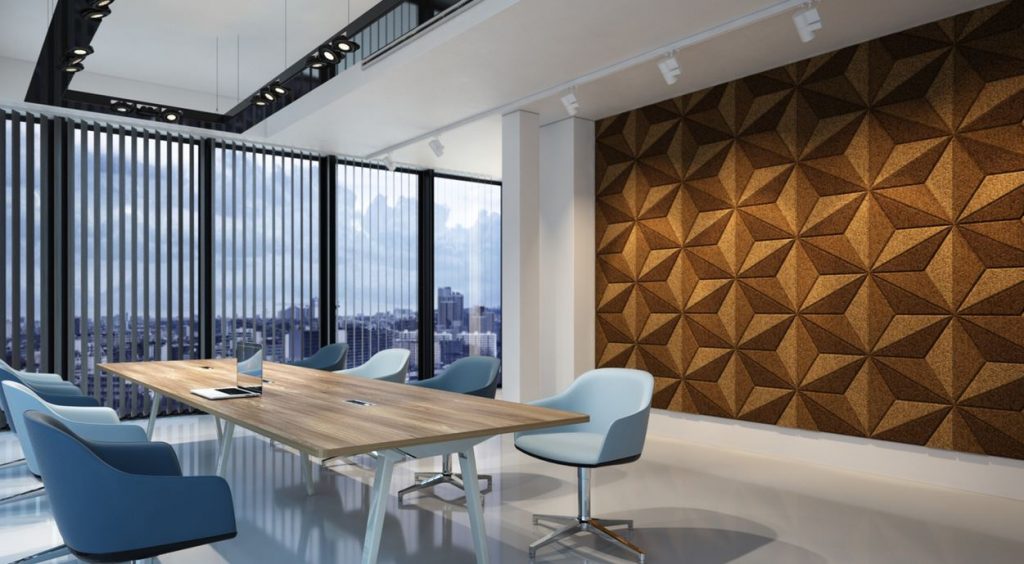
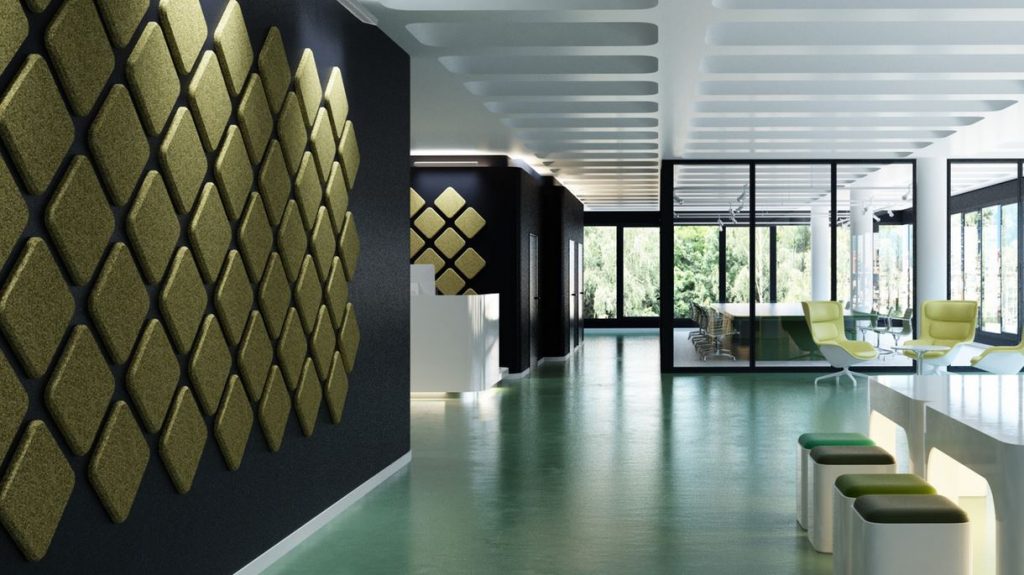
EOacoustic panels by Aotta
The EOacoustic panels possess high decorative properties adaptable to different tasks. The panels come in four variations. The Base collection focuses on the natural texture and unique needles pattern. The Mosaic collection is a system of geometric shapes, in multiple variations of sizes, flat or embossed, that can be combined with each other to create a lot of variations of patterns. The focus of the Groove collection is an engraved pattern, while the Island Wall collection is a system of rounded geometric shapes surrounded by background.
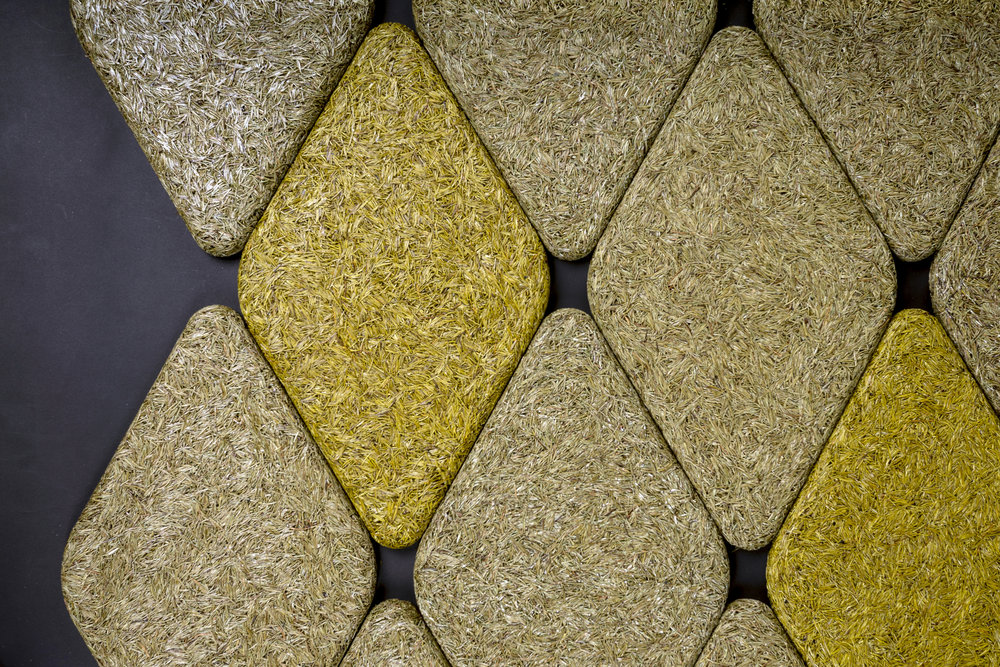
EOacoustic panels by Aotta
The material is non-flammable, sufficiently stable for long-term use inside the interiors, and has great antifungal characteristics.